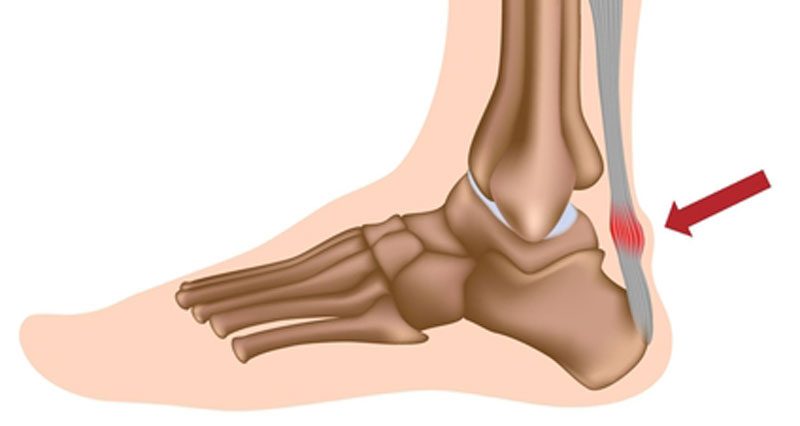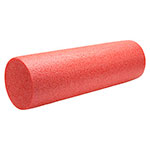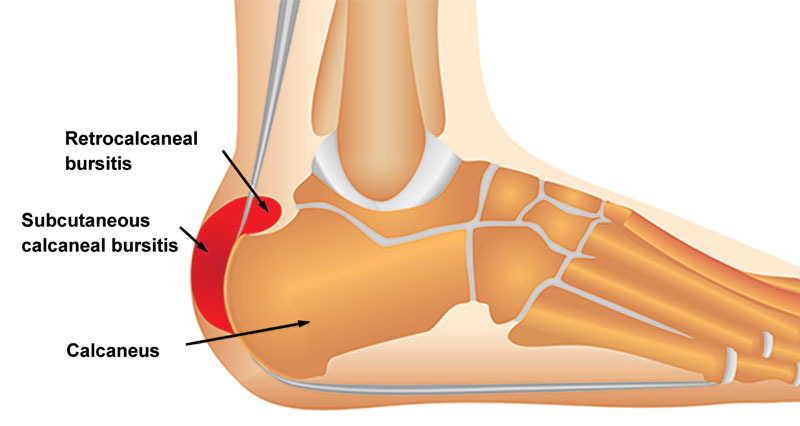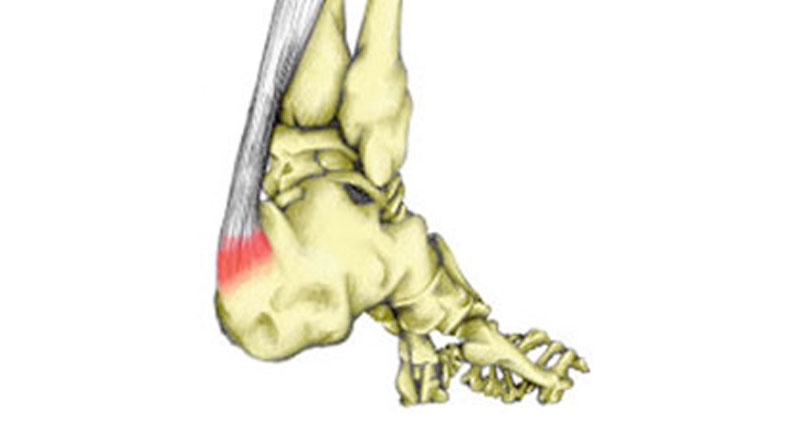Achilles tenosynovitis (also known as paratenonitis) is an inflammatory condition of the sheath or layer surrounding the Achilles tendon It is an overuse injury that affects the sheath surrounding the Achilles tendon, rather than tendonitis which is the degeneration of the tendon itself.
Achilles tenosynovitis symptoms
Symptoms of Achilles tenosynovitis include:
- Achilles tendon pain.
- The Achilles tendon will be painful to touch.
- Pushing up onto tiptoes or stretching the calf muscles may be painful
- swelling or thickening of the tendon.
- When moving the ankle you feel a creaking sensation (called crepitus).
Causes
Achilles tenosynovitis is an overuse injury that occurs due to repeated microtrauma of the sheath which surrounds the tendon. It is most common in runners and those involved in repetitively pushing up on the toes or marching in heavy boots.
It may suddenly develop for the following reasons:
- Tight calf and Achilles complex.
- A sudden increase in training or hill walking/running.
- A change in footwear that is less supportive.
- Going from wearing high heels every day to flat shoes.
Tendonitis and tenosynovitis
Achilles tendonitis or more accurately Achilles tendinopathy is a degenerative condition of the tendon itself. Achilles tenosynovitis is a similar condition of the sheath which surrounds the tendon rather than the tendon itself.
In terms of symptoms, they are very very similar and it is practically impossible to differentiate between the two conditions without investigations such as MRI or ultrasound scans. In a large number of cases, both conditions exist together. As treatment for the two conditions is much the same, an exact diagnosis is often not necessary.
Treatment
Treatment is similar to that of Achilles tendonitis/tendinopathy.
Rest
Rest from the activity (or activities) which aggravate the condition.
Cold therapy
Apply ice or cold therapy products to the tendon for 15 minutes every 3-4 hours to ease pain, swelling, and inflammation.
Medication
Anti-inflammatory medication in tablet or gel form helps reduce pain and inflammation.
Electrotherapy
Electrotherapy treatments such as ultrasound or laser also help reduce pain and inflammation.
Massage
Specific sports massage called frictions applied to the tendon itself encourages blood flow and breaks down adhesions. These are sticky bits between the tendon and tendon sheath.
Sports massage to loosen the calf muscles may be beneficial also.
Exercises
Providing it is comfortable to do so, gently stretch the calf muscles.
Eccentric calf exercises such as heel drops are the best exercise for Achilles injuries.
Injections
If conservative treatment fails, a corticosteroid injection may be administered.




